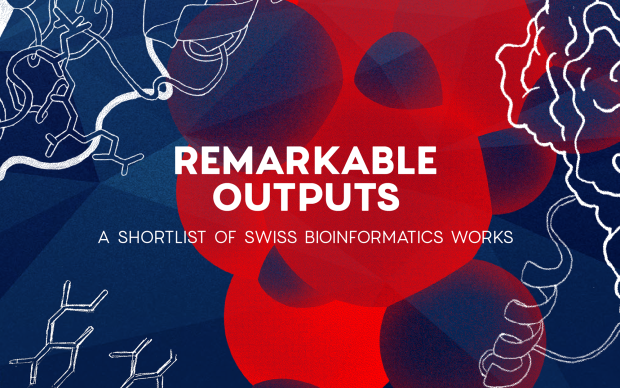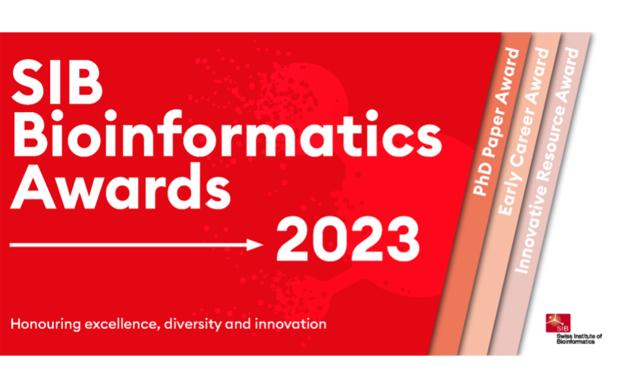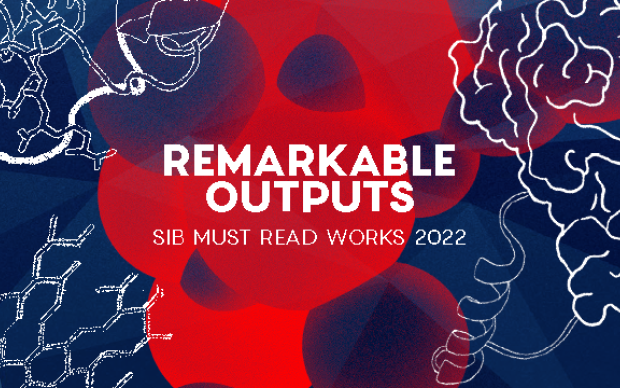Eight outstanding data resources, software tools, and peer-reviewed publications from our members have been recognized as SIB Remarkable Outputs – an annual spotlight on the excellence and diversity of bioinformatics achievements in Switzerland.
Would you like to be among next year’s selected outputs? Visit the Remarkable Outputs page for the next submission deadline.
-
A new class of context-specific transcription factors
SIB GROUP INVOLVED: Laboratory of Systems Biology and Genetics led by Bart Deplancke
Description: The discovery of a new class of transcription factors that enhance gene regulation by working with other key regulators, without directly switching genes on or off, sheds light on how cells maintain their identity and how genetic mutations can disrupt regulation. These ‘context-only’ or ‘amplifier’ transcription factors offer new avenues for understanding disease and developing more precise gene therapies.
What the committee said: “This study offers a significant advancement in understanding enhancer-mediated gene regulation by identifying context-specific transcription factor interactions. Its rigorous data analysis and thoughtful experimental validation make it a remarkable bioinformatics-driven research paper that sheds new light on gene expression regulation.”
-
An AI training dataset to capture enzyme knowledge
SIB GROUP INVOLVED: Swiss-Prot led by Alan Bridge
Related resource: EnzChemRED
Description: Understanding how enzymes work is key to biology, medicine, and environmental science, but much of this knowledge remains hidden in scientific texts. EnzChemRED helps to unlock this knowledge, by providing a dataset that can be used to train AI models for extracting enzyme-related information. This helps expert curators keep biological databases up-to-date and makes important information easier to find and reuse.
What the committee said: “This well-documented study presents EnzChemRED, a comprehensive dataset that enables detection of chemical interactions by Natural Language Processing, providing a valuable resource for advancing bioinformatics and text mining.”
-
A new molecule that allows gut bacteriophages to manipulate their bacterial hosts
SIB GROUP INVOLVED: Bioinformatics Systems Biology led by Christian von Mering
Related resources: MicrobeAtlas Project, SIB news
Description: This work introduces a new tiny molecule found in viruses that prey on bacteria living in the human gut. These viruses, called bacteriophages, use the RNA molecule to evade the defence systems of infected bacteria, thereby ensuring their proliferation.
What the committee said: “This work exemplifies cutting-edge bioinformatics by mining massive genomic datasets and applying advanced motif search tools to uncover over 1,700 previously unknown theta ribozyme variants. It is just brilliant, and has the potential to open the door to many more exciting discoveries.”
-
Database software for pathogen genomic sequences
SIB GROUPS INVOLVED: Computational Evolution led by Tanja Stadler, Microbial Evolution led by Richard Neher, EVE Epidemiology and Virus Evolution led by Emma Hodcroft
Related resources: LoculusDescription: Loculus is an open-source software for building pathogen sequencing databases. Major features include a user-friendly web interface, APIs for automated workflows, a fast query engine for genetic data, and versioning of data changes. Being highly configurable, it aims to facilitate the creation of open, internationally operating data portals as well as national platforms and internal databases within a research lab.
What the committee said: “Loculus is remarkable for enabling efficient and secure sharing of pathogen genomic data, which is crucial for public health responses to infectious diseases. With flexible data preprocessing and powerful search capabilities, it supports the rapid analysis and dissemination of genomic information.”
-
A tool for exploring metagenomics data
SIB GROUP INVOLVED: BUGFri led by Laurent Falquet
Related resource: MAGFlow/BIgMAG
Description: MAGFlow/BIgMAG is a unique tool that helps scientists assess the quality of metagenome-assembled genomes (MAGs) and classify them using taxonomic features. It integrates an orchestrated analysis pipeline with an interactive dashboard that facilitates the exploration and comparison of results from several samples in a single analysis.
What the committee said: “By providing a user-friendly and comprehensive solution, the work significantly contributes to the field of bioinformatics, particularly in enhancing the analysis of complex microbial communities. Its transparency, precision, and execution make it a highly valuable and potentially foundational resource.”
-
A tool for predicting T-cell interactions
SIB GROUPS INVOLVED: Cancer Immune Recognition led by David Gfeller
In collaboration with Computer-aided Molecular Engineering led by Vincent ZoeteRelated resources: MixTCRpred
Description: Billions of T-cells protect us from infections and cancer by recognizing specific targets. However, such diversity makes it challenging to determine which T-cell targets what. That’s where AI comes in. MixTCRpred was developed as a tool that predicts T-cell interactions with viral and cancer targets. This work shows that combining experimental methods with AI is crucial for immunotherapy development.
What the committee said about the work: “MixTCRpred helps predict which T-cell receptors (TCRs) recognize specific epitopes, which is important for advancing immunotherapy. Its strong benchmarking performance, clear documentation, and applicability to single-cell immune data make it a valuable and timely contribution to the field.”
-
A tool for assessing genome and proteome data quality
SIB GROUP INVOLVED: Comparative Genomics led by Christophe Dessimoz and Natasha Glover
Related resource: OMArk
Description: OMArk is a tool for evaluating the quality of predicted proteomes, by identifying missing or erroneous gene annotations and contamination. Unlike previous methods, OMArk checks not only the proteins that should be in a particular genome, but also the proteins that shouldn't be there. Available as both a command-line tool and a webserver, it provides results in under 30 minutes.
What the committee said: “OMArk addresses a critical bottleneck in comparative genomics by helping to assess the quality of genome and proteome data. It enables more reliable large-scale phylogenetic studies and raises important awareness around data quality – an essential step for advancing genomic research.”
-
Software for simulating 3D tissue organization
SIB GROUP INVOLVED: Computational Biology CoBi led by Dagmar Iber
Related resource: SimuCell3D
Description: SimuCell3D is a free, computationally efficient, open-source software that lets researchers create detailed 3D simulations of tissues to study how cells are organized and how changes in their organization contribute to morphogenesis in development and disease.
What the committee said: “Cell-based tissue models are getting more and more important in the community as they are thought to bring an unprecedented benefit to study tissue growth and morphogenesis. Within the competition to bring this field to a new level, this work is remarkable and will mark a clear evolution of the topic.”
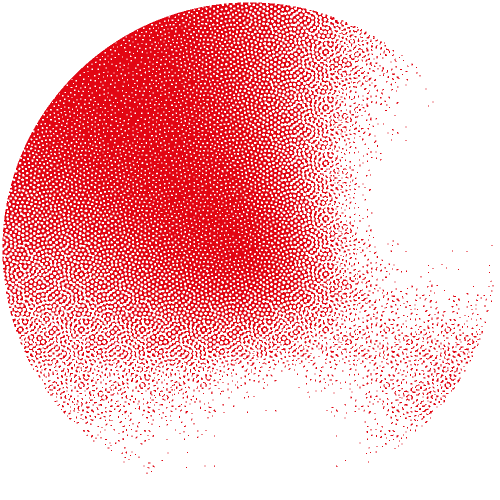

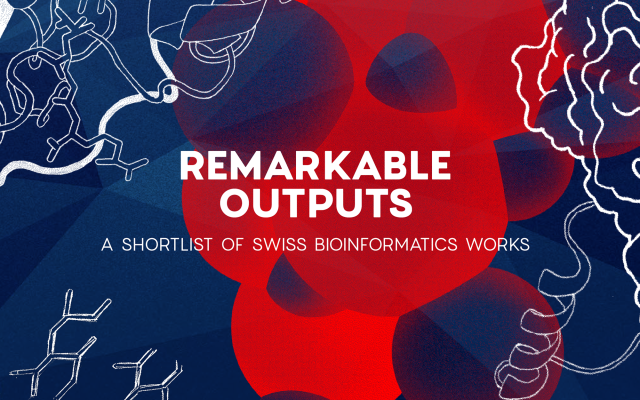











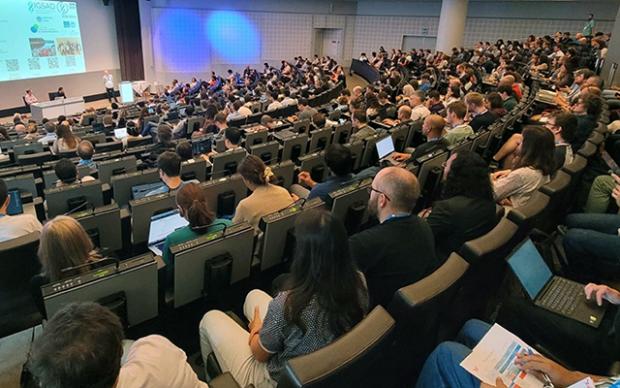
![Ilan Gold presenting at the [BC]2 Basel Computational Biology Conference](/sites/default/files/styles/card_image/public/2025-10/ilan-gold-banner.jpg?h=602a36b5&itok=YvC9BUMP)
![David Meyer presenting at the [BC]2 Basel Computational Biology Conference](/sites/default/files/styles/card_image/public/2025-10/david-meyer-banner.jpg?h=602a36b5&itok=JRGMwIRV)
![Michael Skinnider presenting at the [BC]2 Basel Computational Biology Conference](/sites/default/files/styles/card_image/public/2025-10/michael-skinnider-banner.jpg?h=602a36b5&itok=tmJobPUi)
